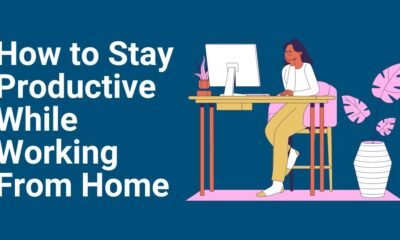Productivity
Deep Work vs. Multitasking: Which Is Better for Productivity?

In today’s fast-paced world, we’re constantly bombarded with distractions. From endless notifications to back-to-back meetings, it’s no wonder many of us feel like we’re always busy but never truly productive. This begs the question: Is there a better way to work?
Enter the battle of work styles: Deep Work vs. Multitasking. On one side, we have the focused, distraction-free approach of deep work. On the other, the juggling act of multitasking that many of us default to. But which one truly leads to higher productivity? In this blog post, we’ll dive deep into both methods, dispel common myths, and provide practical strategies to boost your productivity. Whether you’re a seasoned professional or just starting your career, understanding these concepts could be the key to unlocking your full potential.
Let’s explore the world of deep work and multitasking, comparing their effectiveness, learning how to implement deep work strategies, and discovering ways to overcome multitasking habits.
Understanding Deep Work
Deep Work, a term coined by Cal Newport in his book of the same name, refers to the ability to focus without distraction on a cognitively demanding task. It’s a skill that allows you to quickly master complicated information and produce better results in less time.
Key aspects of Deep Work include:
- Eliminating distractions
- Setting aside dedicated time for focused work
- Developing a ritual or routine for deep concentration
Studies have shown that Deep Work can significantly improve productivity. For example, a study by the University of California, Irvine found that it takes an average of 23 minutes and 15 seconds to get back to a task after an interruption.
The Multitasking Myth
Multitasking, often touted as a valuable skill, involves juggling multiple tasks simultaneously. However, research suggests that true multitasking is a myth. What we perceive as multitasking is actually task-switching, which can be detrimental to productivity.
Some negative effects of multitasking include:
- Reduced efficiency and quality of work
- Increased stress levels
- Difficulty in maintaining focus
A study by Stanford University found that heavy multitaskers were less mentally organized, struggled more with task-switching, and had less control over their attention.
Comparing Deep Work and Multitasking
When it comes to productivity, Deep Work has several advantages over multitasking:
- Quality of Output: Deep Work allows for higher-quality work due to increased focus and concentration.
- Efficiency: By eliminating distractions, Deep Work helps complete tasks faster and more effectively.
- Skill Development: Focused work accelerates skill acquisition and improvement.
- Stress Reduction: Deep Work can lead to a sense of accomplishment and reduced stress levels.
Multitasking, on the other hand, often results in:
- Decreased Productivity: Constant task-switching reduces overall efficiency.
- Lower Quality Work: Divided attention can lead to more errors and lower-quality output.
- Increased Stress: Juggling multiple tasks can be mentally taxing and stressful.
- Difficulty in Problem-Solving: Complex problems often require sustained focus, which multitasking hinders.
Implementing Deep Work in Your Routine
To incorporate Deep Work into your daily routine, consider the following strategies:
- Schedule Deep Work Sessions: Set aside specific times for focused work, free from distractions.
- Create a Distraction-Free Environment: Find a quiet space or use noise-canceling headphones to minimize interruptions.
- Use the Pomodoro Technique: Work in focused 25-minute intervals, followed by short breaks.
- Practice Mindfulness: Regular meditation can improve your ability to concentrate for extended periods.
- Gradually Increase Deep Work Duration: Start with shorter sessions and progressively lengthen them as your focus improves.
When Multitasking Can Be Useful
While Deep Work is generally more productive, there are situations where multitasking can be beneficial:
- Low-Cognitive Tasks: Combining simple tasks, like folding laundry while listening to a podcast, can be efficient.
- Time-Sensitive Situations: In emergencies or tight deadlines, juggling multiple tasks might be necessary.
- Creativity Boosts: Sometimes, switching between tasks can spark new ideas or solutions.
- Managerial Roles: Leaders often need to oversee multiple projects simultaneously.
However, it’s important to recognize that even in these situations, focused attention on each task will yield better results than trying to do everything at once.
Finding the Right Balance
The key to optimal productivity lies in finding the right balance between Deep Work and multitasking. Here are some tips to help you strike that balance:
- Prioritize Tasks: Identify which tasks require deep focus and which can be handled with divided attention.
- Time-Block Your Schedule: Allocate specific time slots for Deep Work and for handling multiple smaller tasks.
- Use Task Batching: Group similar tasks together to minimize context-switching.
- Take Regular Breaks: Allow your brain to rest and reset between focused work sessions.
- Be Mindful of Your Energy Levels: Schedule Deep Work during your peak productivity hours.
- Limit Technology Distractions: Use apps like Freedom or RescueTime to block distracting websites during Deep Work sessions.
Remember, productivity is not about doing more things, but about doing the right things efficiently. By understanding when to apply Deep Work and when multitasking is appropriate, you can significantly boost your productivity and achieve better results.
Conclusion
In the battle of Deep Work vs. Multitasking, Deep Work emerges as the clear winner for enhancing productivity. While multitasking has its place in certain situations, the focused, distraction-free nature of Deep Work allows for higher quality output, improved efficiency, and reduced stress levels.
By implementing Deep Work strategies and being mindful of when multitasking is truly necessary, you can optimize your productivity and achieve your goals more effectively. Remember, the path to peak productivity is not about doing more, but about doing what matters most with intense focus and dedication.
We’d love to hear about your experiences with Deep Work and multitasking. Have you tried incorporating Deep Work into your routine? What challenges have you faced? Share your thoughts in the comments below.
-

 Motivation6 months ago
Motivation6 months agoHow to Create a Powerful Vision Board (2025)
-

 Quotes6 months ago
Quotes6 months ago50 Comfort Zone Quotes to Inspire Growth and Change
-

 Lifestyle6 months ago
Lifestyle6 months agoTop 10 Destinations for Digital Nomads in 2025
-

 Lifestyle8 months ago
Lifestyle8 months agoHow to Cultivate Gratitude and Positivity in Your Daily Life
-

 Health8 months ago
Health8 months agoWhy Good Nutrition Matters More Than You Think
-

 Travel6 months ago
Travel6 months ago10 Life-Changing Lessons You Learn Only Through Traveling
-

 Success6 months ago
Success6 months agoCan Money Truly Buy Happiness? Exploring the Connection
-

 Travel7 months ago
Travel7 months agoTravel Like a Pro: Secrets to Packing Light and Smart


















